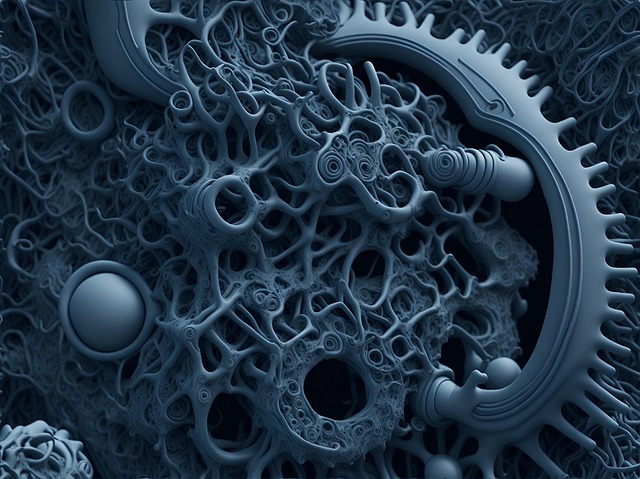Pipe inspection cameras are essential tools for maintaining and optimizing water filtration systems, enabling early detection of blockages, corrosion, leaks, and damage. Advanced technologies like high-definition imaging, improved lighting, and artificial intelligence enhance inspection processes, ensuring optimal system performance and longevity. These innovations support proactive maintenance, minimize downtime, prevent contamination, and optimize resource management in water treatment plants. The global pipe inspection technology sector is being revolutionized by sophisticated cameras and sensor systems, addressing critical infrastructure needs for water distribution networks. Next-gen pipe camera technology promises real-time data and high-resolution imagery, enabling precise detection of issues and contributing to smart cities' sustainable practices.
In the realm of water filtration, staying ahead of maintenance challenges is paramount for ensuring optimal system performance and water quality. Advanced pipe inspection cameras have emerged as indispensable tools, revolutionizing how professionals navigate and assess intricate plumbing networks. This article delves into the significance of these high-tech solutions in water filtration systems, exploring cutting-edge technologies, benefits, real-world applications, leading manufacturers, and future trends that are shaping the water treatment landscape.
- Understanding the Importance of Pipe Inspection Cameras in Water Filtration Systems
- Advanced Technologies in Pipe Camera Design and Functionality
- Benefits of Using High-Tech Inspection Cameras for Optimal Water Quality
- Applications: Where Advanced Pipe Cameras Make a Difference in Water Treatment Processes
- Top Manufacturers Leading the Way in Innovative Pipe Inspection Solutions
- Future Trends: Enhancing Water Filtration with Next-Gen Pipe Camera Technology
Understanding the Importance of Pipe Inspection Cameras in Water Filtration Systems

Pipe inspection cameras play a pivotal role in maintaining and optimizing water filtration systems. These advanced tools enable thorough and safe examinations of pipes, crucial for identifying potential issues before they escalate. By capturing detailed images and videos inside pipe networks, technicians can pinpoint blockages, corrosion, leaks, or damage to filters and other components. Early detection through visual inspection cameras is key to minimizing downtime, preventing contamination, and ensuring the efficiency of water filtration processes.
In the context of water filtration, where the quality and consistency of the final product are paramount, regular camera-based inspections offer significant advantages. They help in identifying and rectifying problems at their source, reducing the risk of water quality degradation. Furthermore, these cameras provide valuable data for system optimization, allowing for informed decisions on maintenance schedules, component replacements, and process adjustments to enhance overall water filtration efficiency.
Advanced Technologies in Pipe Camera Design and Functionality

Advanced technologies have significantly enhanced pipe camera design and functionality, making inspection processes more efficient and accurate. These innovations include high-definition imaging capabilities, allowing for crystal-clear visuals that capture even the smallest anomalies within pipes. With improved lighting systems, these cameras can now navigate dark or murky water filtration systems, providing detailed insights into their condition.
Furthermore, integration of artificial intelligence (AI) has enabled automated defect detection and classification. This AI functionality analyzes pipe structures, identifying issues such as corrosion, leaks, or structural weaknesses with remarkable precision. By leveraging advanced technologies, professionals can now perform comprehensive assessments, ensuring optimal water filtration system performance and longevity.
Benefits of Using High-Tech Inspection Cameras for Optimal Water Quality

Using high-tech inspection cameras for optimal water quality offers numerous benefits, especially in the realm of water filtration. These advanced tools allow for detailed, real-time analysis of pipe conditions, enabling more effective and efficient maintenance strategies. By capturing intricate visuals of internal pipe structures, including corrosion, debris buildup, and other anomalies, professionals can pinpoint issues before they escalate, minimizing disruptions to water supply systems.
Moreover, the data gathered from high-tech inspections aids in optimizing water filtration processes. Accurate identification of blockages or damage can help tailor maintenance routines, ensuring that filtration systems operate at peak performance. This proactive approach not only enhances water quality but also extends the lifespan of critical infrastructure, ultimately contributing to a more sustainable and reliable water supply for communities.
Applications: Where Advanced Pipe Cameras Make a Difference in Water Treatment Processes

Advanced pipe inspection cameras have revolutionized water treatment processes, offering unprecedented insights into the inner workings of pipelines. These innovative tools find extensive applications in various stages of water filtration, from initial intake to distribution. By enabling visual monitoring, they help identify potential issues like corrosion, blockages, or leaks early on, preventing costly breakdowns and ensuring uninterrupted water supply.
In water treatment plants, advanced cameras facilitate efficient maintenance scheduling by providing real-time data on pipeline conditions. This proactive approach not only enhances the overall efficiency of water filtration systems but also contributes to better resource management. Moreover, these cameras aid in navigating complex pipelines, making it easier to pinpoint problem areas and implement targeted solutions, ultimately improving the quality and safety of the water distribution network.
Top Manufacturers Leading the Way in Innovative Pipe Inspection Solutions

The world of pipe inspection technology is witnessing a revolution, thanks to the efforts of top manufacturers pushing the boundaries of innovation. These industry leaders are at the forefront of developing advanced pipe inspection cameras, ensuring efficient and thorough assessments of critical infrastructure. Their cutting-edge solutions play a pivotal role in maintaining and optimizing water distribution networks, which are essential for communities worldwide.
Among these manufacturers, several stand out for their game-changing contributions. For instance, some companies specialize in creating high-definition cameras capable of navigating the most intricate pipes, providing detailed visuals for comprehensive analysis. Others focus on integrating advanced sensors that detect even the subtlest anomalies, enhancing the accuracy of inspections and identifying potential issues early on. These manufacturers’ dedication to research and development has resulted in versatile tools that cater to various industries, including water filtration, ensuring optimal pipe health and longevity.
Future Trends: Enhancing Water Filtration with Next-Gen Pipe Camera Technology

The future of water filtration is poised for a significant upgrade with the integration of next-gen pipe camera technology. As infrastructure ages, efficient and comprehensive inspection tools become increasingly vital to ensure the safety and quality of our water supply. Advanced pipe inspection cameras offer a glimpse into this innovative future by providing real-time data and detailed imagery of piping systems, enabling professionals to identify potential issues within the intricate networks that deliver potable water.
These next-generation cameras are equipped with enhanced features such as high-resolution imaging, advanced lighting systems, and intelligent software capable of detecting anomalies like corrosion, leaks, or blockages more accurately than ever before. By leveraging this technology, water treatment facilities can proactively address problems before they escalate, minimizing disruptions to service and potentially reducing the environmental impact associated with water waste. The trend towards smart cities and sustainable practices further drives the adoption of these cutting-edge camera systems in the pursuit of more efficient and reliable water filtration processes.
